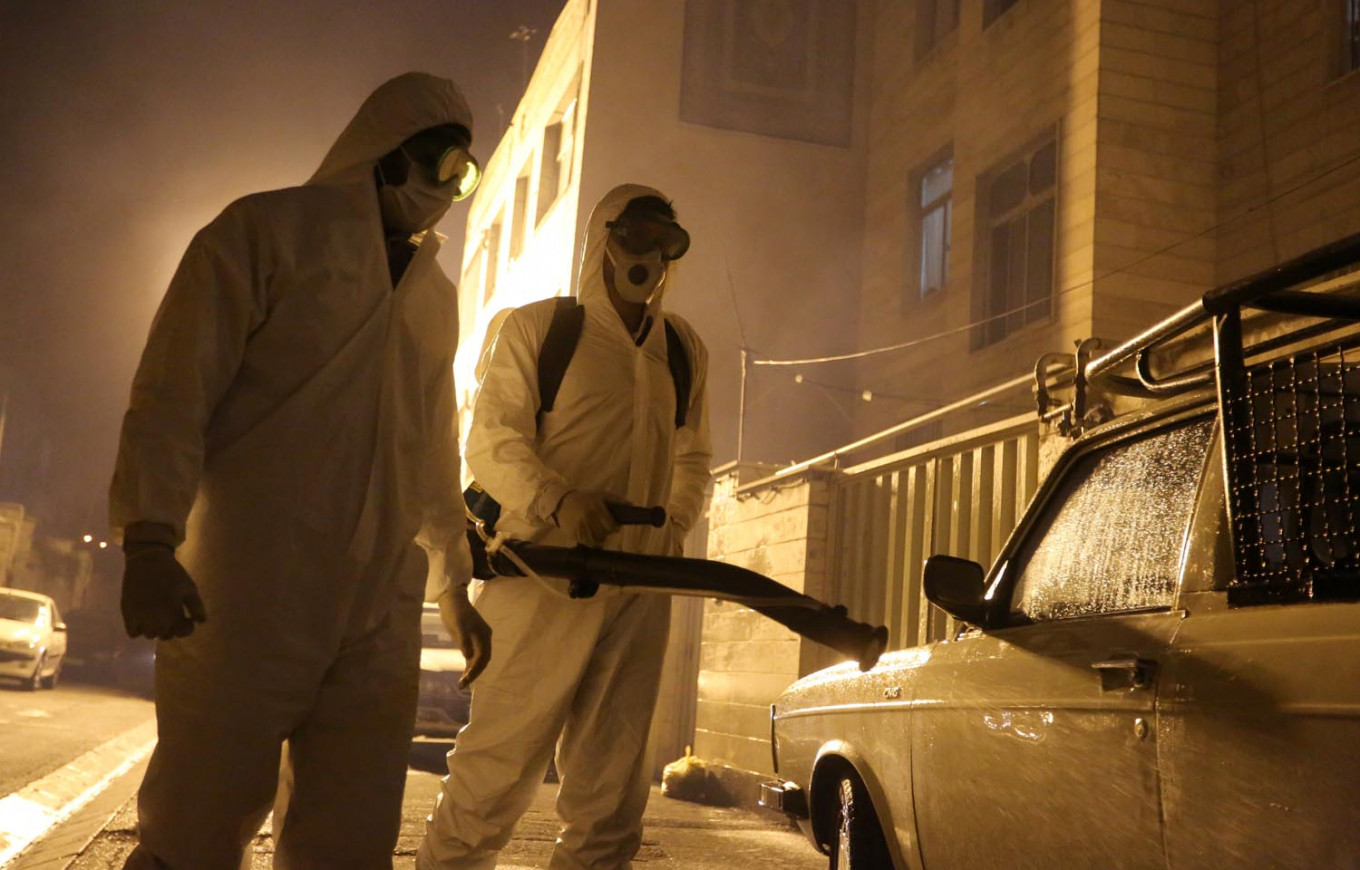How the IMF can help Iran despite US Objections
Brian Hook, the State Department’s point person on Iran, has revealed that the Trump administration had restricted the Islamic Republic’s access to 90 percent of its foreign currency reserves
Change Size
 Iranian firefighters disinfect streets in southern Tehran to halt the wild spread of coronavirus on March 11, 2020. - The novel coronavirus outbreak in Iran is one of the deadliest outside of China and has so far killed 291 people and infected more than 8,000. (AFP/Atta Kenare)
Iranian firefighters disinfect streets in southern Tehran to halt the wild spread of coronavirus on March 11, 2020. - The novel coronavirus outbreak in Iran is one of the deadliest outside of China and has so far killed 291 people and infected more than 8,000. (AFP/Atta Kenare)
T
he coronavirus epidemic has hammered Iran’s economy. Like many developing countries around the world that have seen export revenues fall, Iran faces a balance of payments crunch—but one that has been uniquely exacerbated by the Trump administration’s “maximum pressure” sanctions campaign.
Brian Hook, the State Department’s point person on Iran, has revealed that the Trump administration had restricted the Islamic Republic’s access to 90 percent of its foreign currency reserves. Even when Iran is able to access these funds, medical supplies can be hard to procure. John Smith, the former head of the Treasury Department’s Office of Foreign Assets Control, has said the sanctions have “likely dissuaded many companies from exporting medicine and medical devices to Iran that they otherwise could.”
To address this crunch and to ease imports of medical supplies, Iran has requested a $5 billion emergency loan via the International Monetary Fund’s Rapid Financing Instrument, one of the facilities through which $50 billion in financing will be made available to low-income and developing countries facing balance-of-payments challenges due to the impact of the pandemic.
Although Iran last received a loan from the IMF 60 years ago, the country maintains a good relationship with the Fund. Iran underwent an Article IV consultation with the IMF in 2018 and has proven willing to make tough reforms suggested by the fund’s economists, including a controversial cut to fuel subsidies that spurred protests in November of last year.
But the US will likely aim to block Iran’s access to the requested loan. Since US law defines Iran as a state-sponsor of terror, the Trump administration is obligated to vote down Iran’s request. The US vote share of 16.51 percent means it lacks a veto on the IMF board, but even if it is unable to block the loan, it could use its sanction powers to sabotage the disbursement of the funds.
The European Union has said it would support Iran’s request, and there are growing calls for the Trump administration to ease its economic pressure on Iran at this time of crisis. Unswayed, Trump administration officials have sought to undermine support for Iran’s request to the IMF by arguing that funds risk being diverted away from COVID-19 relief and that Iran should meet its financial needs by drawing down its sovereign wealth fund—a step the Iranian government already took last year as the country’s economic crisis was compounded by devastating floods.
To get Iran the assistance it needs, the IMF can take steps to address the Trump administration’s concerns. First, the Fund can account for the unease of US regulators by excluding dollars, which are normally part of the Special Drawing Right (SDR) basket of currencies in which loans are made. Iran could even agree to accept the loan in euros alone, given that the EU is its primary supplier of medical goods.
Second, the loan could be paid into an account maintained in Europe by the Central Bank of Iran. This would mean that the funds are spent within the European financial system, and therefore subject to oversight from regulators who can monitor for potential misuse, in communication with American counterparts.
The Trump administration has itself implemented a similar system as part of the Swiss Humanitarian Trade Arrangement, a payment channel launched in February that enables the Central Bank of Iran to use assets in Switzerland towards payment of humanitarian exports by Swiss companies.
Administration officials know a loan to Iran can be “de-risked”—what they are seeking to avoid is a political defeat. To that end, the IMF could seek a more discrete way to provide financial support: it could boost Iran’s access to liquid foreign-exchange assets by arranging the sale of some of Iran’s assets at the Fund to a third party, such as a European country.
In this scenario, the IMF would reallocate some portion of Iran’s 1.55 billion in SDR holdings (valued at approximately $2.1 billion) to the buyer, which would then make a payment to Iran in a foreign currency, such as euros, to an account maintained by Iran’s central bank outside the country. The funds would then be spent in accordance with the same oversight measures described above. Such a transaction would not require approval from the IMF board of governors, meaning the US can avoid appearing isolated during an approval vote.
It can be done. The question now is whether the IMF has the will to do it.









